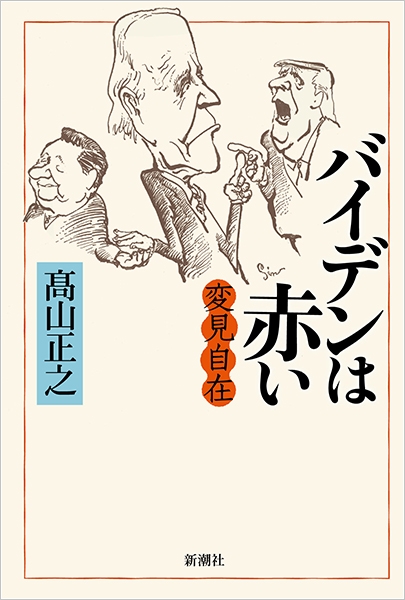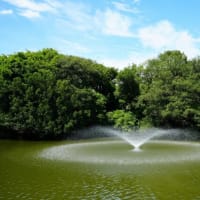The following is from page 49 of Masayuki Takayama's book, "Biden is Red: Lying Presidents, Ill-informed Scholars, and an Unscrupulous Media...49 Stories to Spot Fakes.
This paper also proves that he is the one and only journalist in the postwar world.
It also proves that he deserves the Nobel Prize in Literature.
The Academic Council, Designed by the U.S.
According to the higher elementary school textbook, Hotta Zuisho, a sculptor in the service of the Kyoto Imperial Household, "did a good job that even the emperor admired."
Zuisho continued to do good work after the Meiji Restoration.
During that period, ships were being replaced by steel ships, and with that came the problem of rust, which eroded the bottoms of boats.
Zuisho knew that Japanese lacquer was a suitable rust inhibitor.
He tested rust prevention using Japanese lacquer and introduced Hotta-style rust-preventive paint in 1885, the first patented in Japan.
The Russian cruiser Dmitrii Donskoi was the first to prove its efficacy.
Despite being an up-and-coming ship, the Donskoi was plagued by rust and happened to hear about Zuisho in Japan, where she made a port call.
He was desperate for something to help him, so he coated the ship, and the results were outstanding.
The ship's age was extended, and 17 years later, she participated in the Battle of the Sea of Japan as one of the leading ships of the Baltic Fleet.
In this battle, there were whispers of an overwhelming victory for the Russians.
This was because battleships at the time were manufactured exclusively by Western Europe. The Russians bought the battleship Tsesarevich from France and built the Borodino, Suvorov, and other battleships on that model.
Japan also bought European-made battleships, so the performance of Japanese and Russian battleships was almost equal.
This meant Russia had an overwhelming advantage, with three times as many battleships as Japan.
How could this be reversed?
Masachika Shimose came up with the idea of using shells filled with picric acid explosives, which had three times the destructive power of enemy shells.
However, picric acid has the property of exploding as soon as it comes into contact with iron.
How could it be contained in a steel warhead?
Shimose then remembered Zuisho's lacquer and tried applying lacquer to the inside of the warhead.
It was the moment of the invention of Shimose gunpowder.
The Russian fleet under the flagship Knyaz Suvorov saw for the first time the shells fired by the Japanese fleet off Tsushima.
(Laliboi, "Tsushima") "The shells touched any part of the ship's body and burst into crimson flames, consuming everything.
The steel-armored Oslyabya burned and sank, and the Knyaz Suvorov was reduced to scrap iron.
Dmitrii Donskoi also sank herself off Ulleungdo in a deep red blaze.
The Japanese, with their wisdom and ingenuity, repelled the invasion of an overwhelmingly powerful and merciless white nation.
The Japanese continued to demonstrate their wisdom to the amazement of the world.
In the West, the atomic structure was thought to consist of electrons and protons "mixed like azuki beans and rice."
Around the time of the Russo-Japanese War, Hantaro Nagaoka announced, "Like Saturn and its rings, the electrons revolve around the protons."
In the Taisho era (1912-1926), Shuji Yagi devised a directional radio antenna for ultra-short waves.
In other words, he created radar.
In the early Showa period, Kenjiro Takayanagi succeeded in receiving images using a cathode-ray tube.
The first image he received was "i".
Around the same time, Takeshi Takei invented and patented the non-metallic magnet ferrite.
The nonferrous magnet made recording tapes possible.
The whites were quick to steal the wisdom of the Japanese.
Rutherford won the Nobel Prize for following Nagaoka's theory.
The British and Americans immediately turned Yagi's wisdom into military radar.
Takayanagi's T.V. was made into the eye of guided missiles by the U.S. military after the war.
Ferrite was intercepted by the victorious Dutch company Philips in the throes of the postwar period.
This technology has made stealth possible today.
The use of civilian technology for military purposes is called "spin-on.
Will this series of "steals and military diversions'' lead to a steal-on?
Before the last war, the swindling United States suddenly stopped publishing papers on nuclear fission.
It was very suspicious.
When it passed the critical point, the Japanese knew that one gram of uranium-235 had the explosive power of 13,500 tons of TNT.
Yoshio Nishina, Hideki Yukawa, and others were doing research and were making uranium fluoride for enrichment.
The 700,000-kilowatt Suifeng Dam on the Yalu River had been completed, so a nuclear weapon could be built if they wanted to.
However, it was unlikely that even the United States would use such a devilish weapon in actual warfare.
Development was delayed, and the atomic bomb was dropped on Hiroshima first.
If Japanese scientists had had the ruthless heart of a white man, Japan could have had nuclear weapons long ago.
If they had, the U.S. would have feared retaliation and would not have dropped the bomb on Hiroshima.
After the war, the U.S. had the Science Council of Japan seal off the outstanding scientific mind of the Japanese people.
What the Council for Science and Technology calls peace is a "white man's peace.
(December 3, 2020 issue)


5/25/2024 in Kyoto













